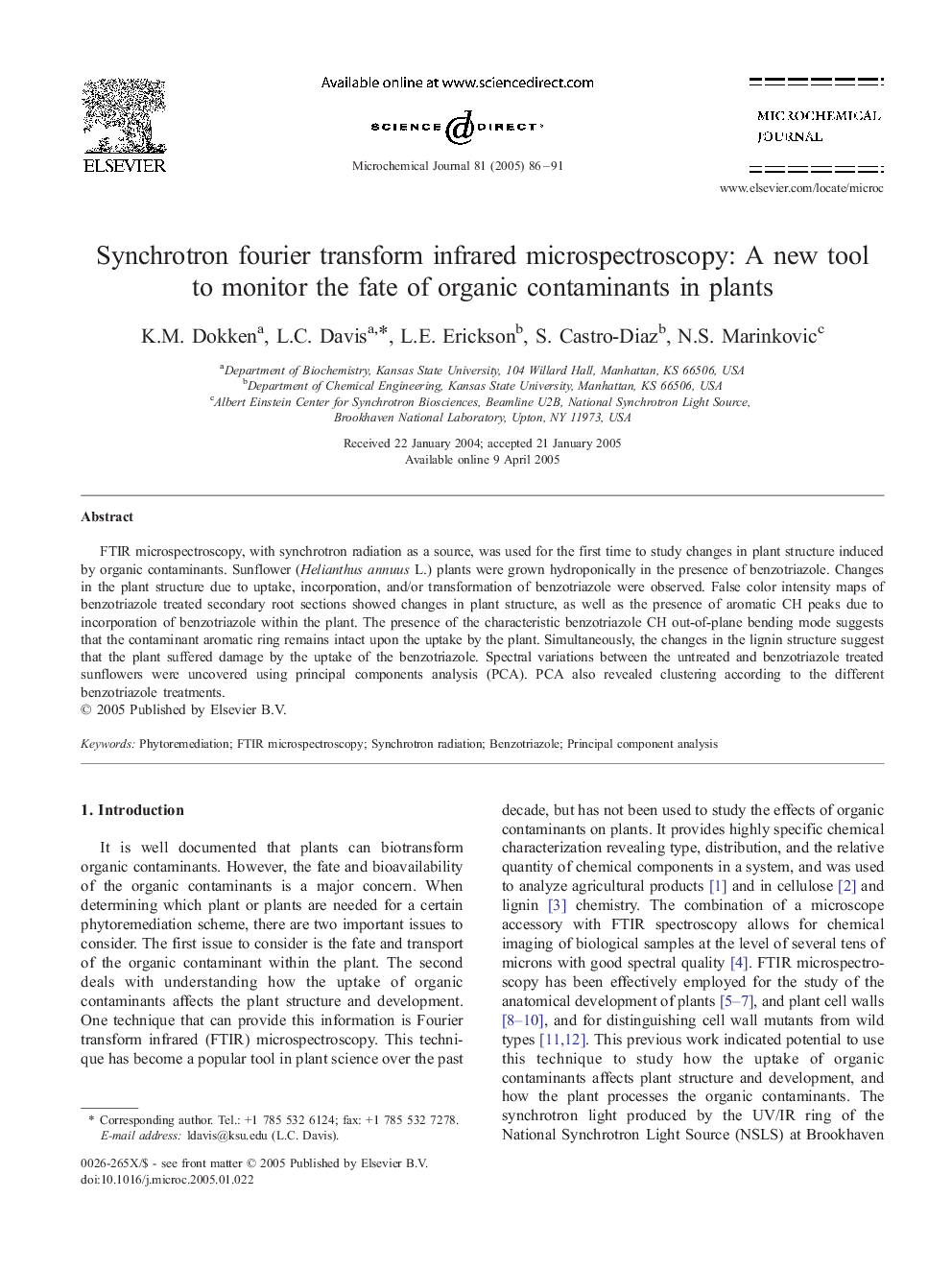| Article ID | Journal | Published Year | Pages | File Type |
|---|---|---|---|---|
| 10557223 | Microchemical Journal | 2005 | 6 Pages |
Abstract
FTIR microspectroscopy, with synchrotron radiation as a source, was used for the first time to study changes in plant structure induced by organic contaminants. Sunflower (Helianthus annuus L.) plants were grown hydroponically in the presence of benzotriazole. Changes in the plant structure due to uptake, incorporation, and/or transformation of benzotriazole were observed. False color intensity maps of benzotriazole treated secondary root sections showed changes in plant structure, as well as the presence of aromatic CH peaks due to incorporation of benzotriazole within the plant. The presence of the characteristic benzotriazole CH out-of-plane bending mode suggests that the contaminant aromatic ring remains intact upon the uptake by the plant. Simultaneously, the changes in the lignin structure suggest that the plant suffered damage by the uptake of the benzotriazole. Spectral variations between the untreated and benzotriazole treated sunflowers were uncovered using principal components analysis (PCA). PCA also revealed clustering according to the different benzotriazole treatments.
Keywords
Related Topics
Physical Sciences and Engineering
Chemistry
Analytical Chemistry
Authors
K.M. Dokken, L.C. Davis, L.E. Erickson, S. Castro-Diaz, N.S. Marinkovic,
